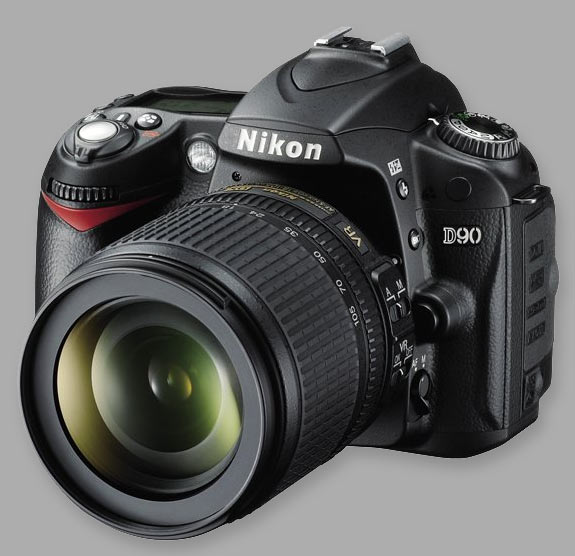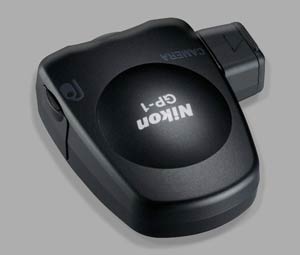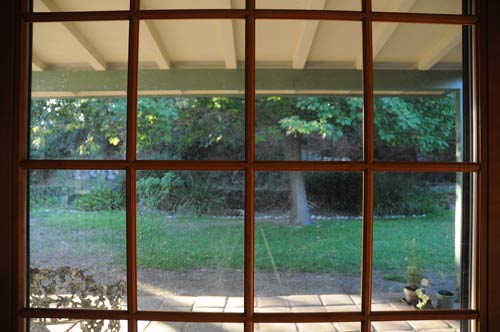
|
Equipment reports here are evolving documents. Return visits may reveal more information. Latest update: 9/21/08 |
Evolved
Still The One As a 12 MP still camera, the D90 is quite an advance over the D80. Even though the individual image chip photosites are smaller than those on the previous D80, the images show better dynamics and lower noise. In other words, you can shoot at higher ISO and expect lower grain and noise in the image. In-camera retouching has reached new heights in the D90 without loading in a bunch of crummy, useless, gratuitous effects. These are genuinely useful tweaks that you can apply during a quiet moment between shots. More on this later. In rough terms, the D90 delivers images about 1.5-stops higher in ISO than the ones from the D80/D40x/D60. And, of course, they're 12 MP instead of 10 MP. In informal tests we found that the D80 pretty much maxxed out at ISO 1600—as far as generally useful images are concerned, but the D90 lifted this to about ISO 4000 before we gagged on the noise. Of course your gag reflex may be different from our own.
Price? Think $225 and you won't be disappointed. But as of January '09 they're frequently backordered. The actual data port that takes the GP-1 is different from the one on the D80, so older wired remote releases won't fit. Sell you a new DC-2 Remote Cord, meester? Only $30 from Calumet. If you had a D80 and were thinking of upgrading, you could bring your MB-D80 battery base and ML-L3 infrared remote along for the ride. And I did. They're the right thing for the D90. The new 18-105mm VR zoom is often bundled with the camera body for an approximate $100 savings ($300 more), so we bought ours that way to see how it performed. In short, it's a fine lens with a comfortable size and zoom range. If you need a full zoom to 200mm, think about the Nikkor 55-200mm VR zoom. There is zero chromatic aberration with the 18-105 lens, but that's not a Big Surprise, since Nikon figured out how to process CA out of JPEG photography by using an in-camera version of our own CA-reduction technique. That image processing trick has been available in our Photoshop Actions since the year 2000 and appears in our latest Actions eBook. Our main question was "Howcome it took so long?" Probably processor speed, since individual color channels (RGB) are re-sized to solve the issue. CA-reduction in the D300 introduced the idea, and we will probably see it in cameras from now on. But the D90 is the first Nikon DSLR to introduce Barrel Distortion Correction to straighten out images that look a tad bloated.
Rollover the shot with your cursor and see what the camera achieved with its default operation. You can overlay straight lines in Photoshop to check the accuracy of geometry adjustments. So we did. Keep in mind that this is without fine tuning that the camera allows--it's just the quick default attempt. Click on the image and you will see our test overlay straight lines. They' show that Nikon got it about 97.5% perfect. Further fine tuning in the correction menu lets you tweak it to about 99.3% perfect. In other words, the camera does a terrific job of turning any pincushion or barrel distortion into architect-level straight line results, even better than the above visual shows. Perhaps future cameras will have this as an automated effect that you can option before you shoot. While we tried for perfection in our Photoshop Actions, the D90 got it so good that nobody will ever complain that the shot had barrel/pincushion distortion. Nikkor lenses that the camera knows about tell the geometry routine how much correction to apply in Auto mode. How will future lenses work? Updates to the internal firmware now includes a special third item that tracks lenses. For third-party optics, the Manual mode will let you tune the image visibly, and it works nearly as quickly as a finely tweaked automated correction. Throughout the D90 there is evidence of evolutionary design. Deletion and Hiding images now offers the option to do it by Date. Then, there are the head-scratchers. A Playback option called Pictmotion lets you select images, a sound track of Music—by theme name, not audition—and Effects, five available, that cause transitions between image files in a sort of moving slide show. Sounds great, right? Not so fast, lens breath:
Thankfully there is a regular Slide Show function available, so our advice is simply avoid the Pictmotion idea. Anyway, there's much more in here that is good. Stunning, even. The Set Picture Control follows the one in the D300 and it is far better than the one seen in the D80. Monochrome options include color filters and printing tints. Managing the myriad settings is now much easier. When you create a new setting, the camera generates a plausibly appropriate name for it before you committ to saving it. "MONOCHROME-02" or "STANDARD-02" appear automatically. You can rename them to anything you wish.
These work with tonal values seen in the current exposure and often deliver a more film-look result. You have to become experienced with these to know how they truly feel. The train is seen here in Auto. Rollover and click for Low and Extra High interpretations. The combination of these settings along with Set Picture Control options bring you hundreds of thousands of "film types" inside the D90. All images were shot with a Manual exposure using ISO 200, 1/400 sec @ f/10. Multiple Exposures can be 2 or 3. That's all you get, but our eBook (now slated to be released in about April 09) will show you how to transcend this limit. Auto Gain is an option that keeps exposure from going ballistic. Movie Settings allow 1280 x 720 for 16:9 aspect, or 640 x 424 and 320 x 216 for approximately 3:2 aspect small files. You'll have to visit our movie mode review page for the lowdown on how to get down with D-Movie mode. Reviewing can be zoomed back past the nine-image viewing into a teenie thumbnail view with 72 images showing at once, per page. The super resolution monitor screen makes this into a pleasant way of scanning through many images at a gulp. Jump back one more step and you are in Calender mode, with teenie icons dotting a calender view. Kewl. Auto-focus now includes Nikon's Dynamic 3D Tracking technique. You target a subject and when it moves around the screen, the camera moves the AF Point around to keep it locked in focus. Matrix metering is via the 420-sensor array of RGB light meters in a 28 x 15 sensor array. It equals 9.33 x 5 full RGB meters. Spot metering is the very middle group of RGB sensors. Movie and Live View modes have the option to use AF by Face Tracking. Quite literally, the camera looks for up to five faces at once, delivering focus to the best setting to clearly capture them all. Bottom Lineage: The D90 is a superior camera to the D80 and it throws in an interesting movie mode, too. As the primary camera for someone looking to spend under a grand on the body, it's a clear winning choice. In still camera mode, it's nearly as good as the D300/D3 in most respects and some of its new features that are more evolved from prior models make it a great second body for pro users. —Peter iNova eBook D90? Oh, yes. It's just too sweet a camera to ignore. The eBook appeared in May, 2009 with more stuff in it than anybody at Nikon ever dreamed of.
|
|
 D90
D90 Accessories from the D90 are often the same as those that worked with the D80 except the new Nikon GP-1, which has its own—different—data port on the D90. With a GP-1 in place, accurate GPS position, altitude and Universal time may be recorded in the metadata of each frame. Acquisition time is said to be short, about 5 seconds.
Accessories from the D90 are often the same as those that worked with the D80 except the new Nikon GP-1, which has its own—different—data port on the D90. With a GP-1 in place, accurate GPS position, altitude and Universal time may be recorded in the metadata of each frame. Acquisition time is said to be short, about 5 seconds.
